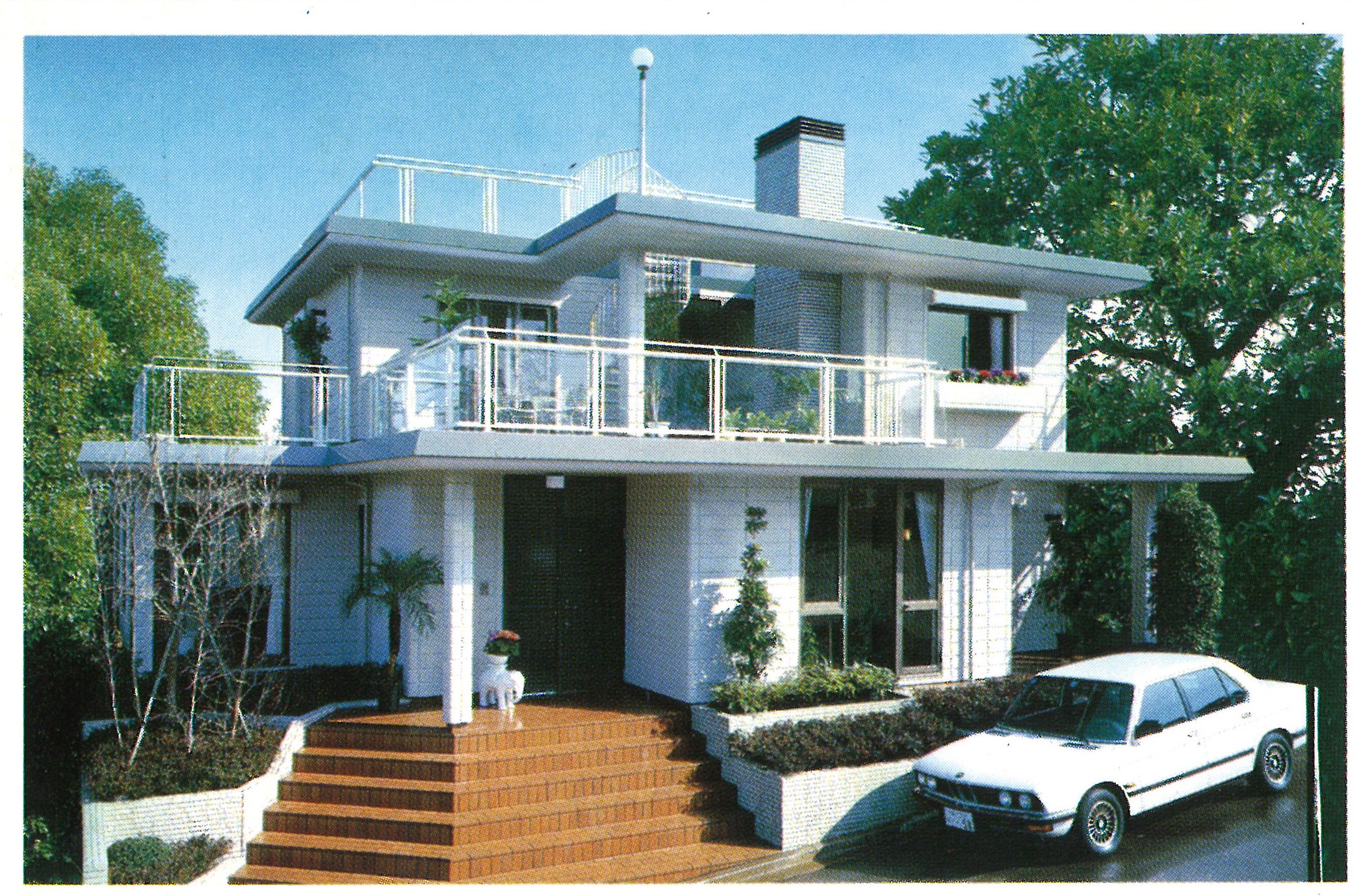100 StoriesThe Untold Story Behind Creating Hebel Haus™ in 1972
This housing business started with President Kagayaki Miyazaki’s words: “I want to offer outstanding houses comparable to those in the West.” Miyazaki was personally attached to this business because he had been aiming to become a comprehensive manufacturer of food, clothing, and shelter.
Miyazaki launched a real estate department and entered the housing market in 1969. A year later in 1970, the first Hebel Haus™ was built in a housing exhibit in Kamata, Tokyo, and was opened for display.
Hebel is a lightweight aerated concrete called Autoclaved Lightweight Concrete (ALC). Asahi Kasei was the first to implement it in Japan in technical collaboration with the German company, Hebel-Gasbetones. The biggest feature of Hebel Haus™ is that it uses this Hebel concrete for the outer wall, roof, and floor, making it lighter and improving its humidity control and fire resistance features. It is also worth mentioning that it is a prefabricated house, not a conventional wooden house.
Asahi Kasei was late to the prefabricated house market, but the approach of specializing in an urban style and the strategy of “Aiming to be the Mercedes of houses” set Asahi Kasei apart from other companies. In 1972, Miyazaki established Asahi Kasei Homes as a company that specialized in housing to develop his future housing business.
However, the true challenge was yet to come. The start of Asahi Kasei Homes was full of difficulties.
The first issue the company faced when they started selling custom-built houses was the construction system. In the beginning, they assigned agencies due to resource shortage. In this method, Asahi Kasei worked on system development as well as training and leading the agencies, while they did the direct work. The key to success was whether the company was well-versed in housing and had the expertise and human resources that can provide the agencies with enough guidance.
However, Asahi Kasei did not have these abilities at the time, causing many problems with the business. There were frequent problems between sales, design, and construction due to unclear agreements. It was not uncommon for complaints to reach sections other than the Real Estate Division.
The next big problem was that the construction capabilities could not catch up with the number of orders. The workers at the agencies who were in charge of the direct work were paid on a commission basis, so they were more keen to secure more contracts and cooperation with the construction side was neglected. In 1973, the prices of wood went up drastically and the construction of approximately 70 houses was delayed as a result.
The employees at Asahi Kasei showed unity during this predicament. They stopped accepting orders until the end of the year to complete the construction and hand the houses over. All the employees in the housing department decided to work as a team. Determined to complete the construction by the end of the year no matter what, they created a plan called the D Plan (D as in December).
The employees themselves helped with painting and papering the shoji sliding doors day and night. At times, they asked carpenters from Nobeoka for help. After a desperate struggle, D Plan was a huge success and they were able to complete the construction within that year. They had no time to rejoice as they had to make improvements to avoid making the same mistake again.
They took advice from Sekisui House, a sister company that had been in the business for a longer time, changed the sales system of the agencies to direct sales, and limited their sales area to certain parts of the Kanto region. After that, they started accepting orders again and overcame their lack of resources through job rotation.
At this time, to avoid construction delays, they created detailed blueprints in accordance with standard specifications and established the current system where building contractors and carpenters construct the houses according to a manual.
This housing business faced many challenges that would be unthinkable today, but the success of the employees at that time who sought advice and worked day and night to overcome these challenges is invaluable considering the success it lead to today. This is the untold story behind learning from mistakes and creating the housing business that is now supporting the backbone of the group.
 (Photo)
The first Hebel Haus™ (Kamata housing exhibit)
(Photo)
The first Hebel Haus™ (Kamata housing exhibit)


